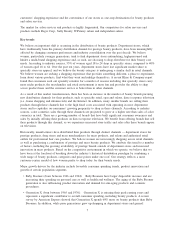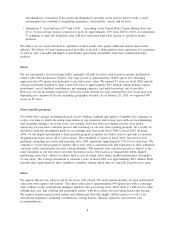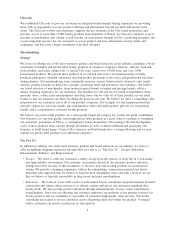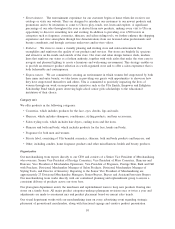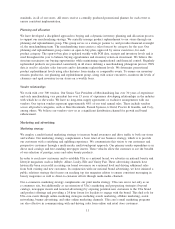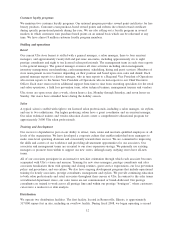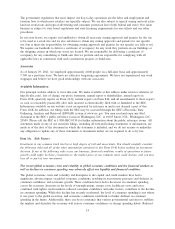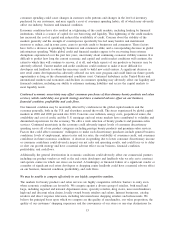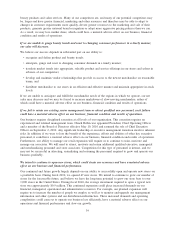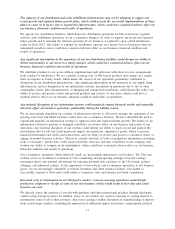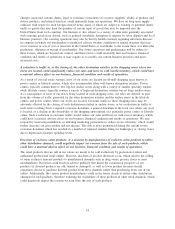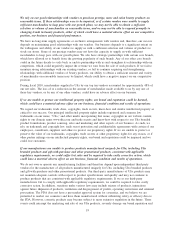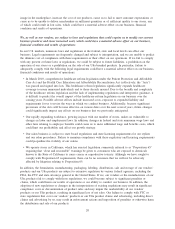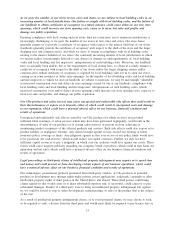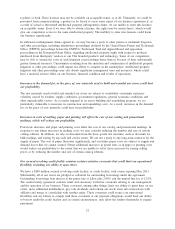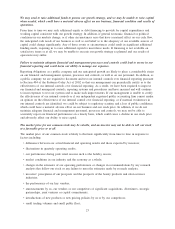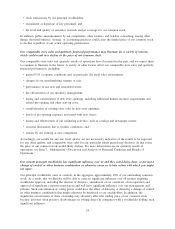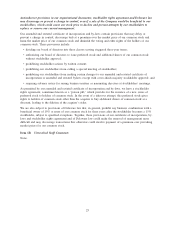Ulta 2010 Annual Report Download - page 20
Download and view the complete annual report
Please find page 20 of the 2010 Ulta annual report below. You can navigate through the pages in the report by either clicking on the pages listed below, or by using the keyword search tool below to find specific information within the annual report.beauty products and salon services. Many of our competitors are, and many of our potential competitors may
be, larger and have greater financial, marketing and other resources and therefore may be able to adapt to
changes in customer requirements more quickly, devote greater resources to the marketing and sale of their
products, generate greater national brand recognition or adopt more aggressive pricing policies than we can.
As a result, we may lose market share, which could have a material adverse effect on our business, financial
condition and results of operations.
If we are unable to gauge beauty trends and react to changing consumer preferences in a timely manner,
our sales will decrease.
We believe our success depends in substantial part on our ability to:
• recognize and define product and beauty trends;
• anticipate, gauge and react to changing consumer demands in a timely manner;
• translate market trends into appropriate, saleable product and service offerings in our stores and salons in
advance of our competitors;
• develop and maintain vendor relationships that provide us access to the newest merchandise on reasonable
terms; and
• distribute merchandise to our stores in an efficient and effective manner and maintain appropriate in-stock
levels.
If we are unable to anticipate and fulfill the merchandise needs of the regions in which we operate, our net
sales may decrease and we may be forced to increase markdowns of slow-moving merchandise, either of
which could have a material adverse effect on our business, financial condition and results of operations.
If we fail to retain our existing senior management team or attract qualified new personnel, such failure
could have a material adverse effect on our business, financial condition and results of operations.
Our business requires disciplined execution at all levels of our organization. This execution requires an
experienced and talented management team. Chuck Rubin was appointed President, Chief Operating Officer
and a member of the Board of Directors effective May 10, 2010 and assumed the role of Chief Executive
Officer on September 2, 2010. Any significant leadership or executive management transition involves inherent
risks. In addition, if we were to lose the benefit of the experience, efforts and abilities of other key executive
personnel, it could have a material adverse effect on our business, financial condition and results of operations.
Furthermore, our ability to manage our retail expansion will require us to continue to train, motivate and
manage our associates. We will need to attract, motivate and retain additional qualified executive, managerial
and merchandising personnel and store associates. Competition for this type of personnel is intense, and we
may not be successful in attracting, assimilating and retaining the personnel required to grow and operate our
business profitably.
We intend to continue to open new stores, which could strain our resources and have a material adverse
effect on our business and financial performance.
Our continued and future growth largely depends on our ability to successfully open and operate new stores on
a profitable basis. During fiscal 2010, we opened 47 new stores. We intend to continue to grow our number of
stores for the foreseeable future, and believe we have the long-term potential to grow our store base to over
1,000 stores in the United States. During fiscal 2010, the average investment required to open a typical new
store was approximately $0.9 million. This continued expansion could place increased demands on our
financial, managerial, operational and administrative resources. For example, our planned expansion will
require us to increase the number of people we employ as well as to monitor and upgrade our management
information and other systems and our distribution infrastructure. These increased demands and operating
complexities could cause us to operate our business less efficiently, have a material adverse effect on our
operations and financial performance and slow our growth.
16



